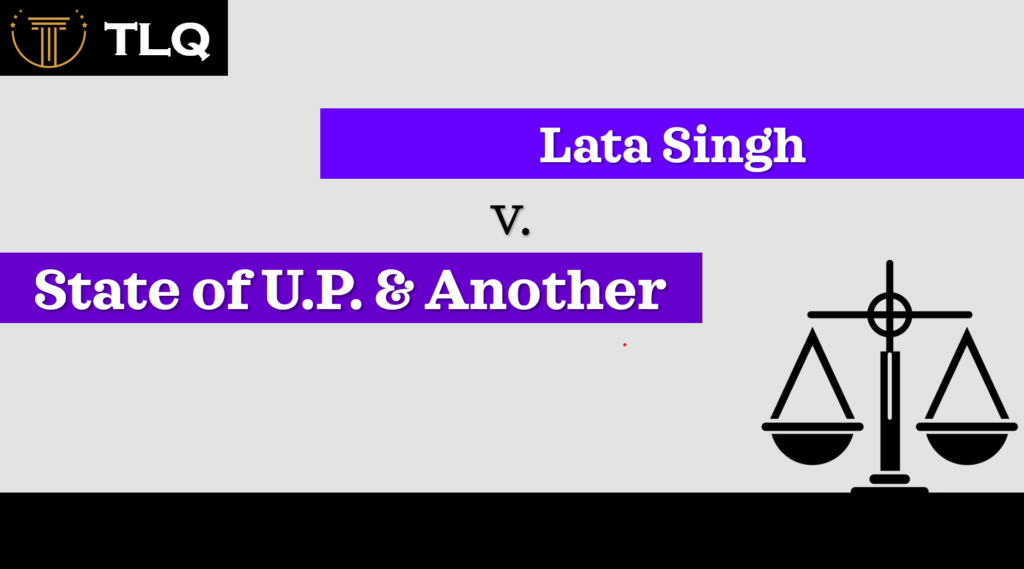Published On: 15th September, 2024
Authored By: Rubi Chauhan
Army Institute of Law, Mohali
Abstract
Child custody laws in India are integral to family law proceedings, crucially determining parental rights and responsibilities post-divorce or separation. This article explores the complex landscape of child custody arrangements governed by diverse legal statutes, all unified by the overarching principle of prioritizing the child’s best interests. Amidst varied personal laws and the secular Guardians and Wards Act, 1890, courts adjudicate custody disputes with careful consideration of factors like parental capability, the child’s emotional bond with each parent, and continuity in the child’s upbringing. While favouring joint custody where feasible, courts ensure decisions uphold the child’s welfare, aiming to foster a nurturing environment conducive to their healthy development.
1. Introduction
Child custody is a crucial element of family law proceedings, focusing on the distribution of parental rights and responsibilities after a divorce or judicial separation. In India, child custody determinations are complex, governed by legal statutes, and driven by the principle of prioritizing the child’s best interests.
During divorce or separation proceedings, child custody often becomes a primary contention point. Although there are no rigid guidelines for custody arrangements, courts are responsible for carefully assessing various factors to reach a decision that benefits the child’s welfare and overall well-being. In many cases, courts prefer to grant joint custody to both parents, acknowledging the importance of maintaining strong relationships with both maternal and paternal figures in the child’s life.
Resolving child custody disputes requires a careful balance of legal considerations and the paramount goal of protecting the child’s physical, emotional, and developmental needs. Through thorough assessment and thoughtful deliberation, courts strive to establish custody arrangements that foster the child’s healthy growth and overall welfare.
2. What is Child Custody?
The term “child custody” refers to the legal and practical relationship between a parent and their child, encompassing the parent’s rights and responsibilities to raise, care for, and make decisions about the child’s life. It determines which parent has the authority to make decisions about the children and where the children will live. Typically, the child’s biological parents decide on the child’s residence, healthcare, education, and religious upbringing. When parents separate or divorce, child custody arrangements are often established to ensure the child’s well-being and maintain their relationship with both parents.
Families today differ significantly from those in the past. According to Pew Research, only 46% of children aged 18 and under live with two married heterosexual parents who have never been divorced. In contrast, 34% live with an unmarried parent, and 15% live with two parents in remarriages.[1]
When a child’s legal parents separate, decisions regarding child custody must be made, often proving more complex than anticipated.
3. Types of Custody
There are two types of custody: physical custody and legal custody. When parents separate, it is essential to establish who holds each type of custody.
3.1 Physical Custody
When a parent is granted physical custody, it means the child will live with that parent, while the other parent is given visitation rights to meet with the child regularly. This form of custody is the most common approach to ensure the child receives the benefits of a family environment and the best possible upbringing. It aims to create a nurturing and enriching atmosphere for the child while ensuring they continue to receive affection from both parents during their formative years. The parent with physical custody is typically the primary guardian with whom the child resides.
3.1.1 Joint Physical Custody
This arrangement, known as a “parenting plan,” is often worked out between parents according to their schedules, allowing the children to stay with the parent available to care for them. If parents cannot agree, the court imposes a custody and visitation schedule. While the goal of joint custody is equally shared custody, the courts often order “significant periods” of physical custody to ensure children have “frequent and continuing contact” with both parents.
3.1.2 Sole Physical Custody
Sole physical custody may be ordered when one parent is unable to provide a healthy and stable living environment for the children. This can occur if a parent abuses drugs or alcohol, is involved in a criminal lifestyle, or is violent or abusive towards the children or others. Sole physical custody may also be granted to one parent if the other parent is found to be alienating the children from or keeping them away from the other parent.
3.2 Legal Custody
In legal custody, parents have the right to make important decisions regarding the child’s education, religious upbringing, financial support, and medical care. This decision-making is typically shared between both parents, with both also sharing the expenses and responsibilities for the child’s maintenance and well-being.
4. Legal Framework Governing Child Custody
In India, child custody laws are primarily governed by personal laws, which vary for Hindus, Muslims, Christians, and Parsis. Additionally, the Guardians and Wards Act, 1890, serves as a secular law applicable to all communities.
4.1 Child Custody as per Hindu Law:
The Hindu Minority and Guardianship Act, 1956, along with the Guardians and Wards Act, 1890, governs custody matters for Hindus, Buddhists, Jains, and Sikhs. This law also applies to Jains, Buddhists, and Sikhs, as they are included under the definition of Hindu. Under Hindu law, the welfare of the child is the paramount consideration. The mother is usually considered the natural guardian of a minor child up to the age of five.
According to Section 6 of the Hindu Minority and Guardianship Act, 1956, a Hindu child below the age of 5 years should be placed in the mother’s custody, as she is deemed to provide the necessary emotional, moral, and physical support at this age.
For a boy or an unmarried girl aged between 5 and 18 years, custody may be awarded to the father, who is considered the natural guardian. Only after the father’s death will custody be granted to the mother.
If the child is illegitimate, custody will remain with the mother.
A third person can be granted custody if the parents are unwilling or if the court determines it is in the child’s best interest to be away from the parents. In such cases, the grandparents (paternal or maternal) are usually preferred if they are capable and willing.
If neither the parents nor close relatives are willing to take custody, the court will find an appropriate person to take custody of the child.
4.2 Child Custody as per Muslim Law:
Muslim personal laws are derived from religious texts and customs. Under Sunni law, the mother generally has the right to custody of minor children until they reach a certain age. Under Shia law, custody belongs to the mother until the child is two years old. The father is considered the natural guardian, but the best interests of the child remain a critical factor. Under Muslim personal law, the right to a child’s custody is called “hizanat” and can be enforced against anyone, including the father.
Custody of a Muslim child typically remains with the mother until the boy reaches the age of 7 and until the girl reaches the age of majority or puberty. After a boy turns 7 and a girl reaches majority or puberty, custody may be transferred to the father, who is considered the natural guardian under Muslim law. The mother’s right to custody is not absolute and is contingent upon the welfare and best interests of the child. Thus, the child’s well-being is a primary consideration in Muslim law.
4.3 Christian and Parsi Law:
Guardianship for Parsi and Christian children is governed by the Guardians and Wards Act, with custody provisions also found in Sections 41 to 44 of the Indian Divorce Act, 1869.
- Section 41: Allows the court to issue orders on custody, maintenance, and education of minor children during judicial separation.
- Section 43: Pertains to similar orders in cases of dissolution or nullity of marriage.
- Section 44: Permits applications for custody, maintenance, and education even after the final decree.
The court exercises discretion based on the child’s best interests, without adhering to strict rules.
5. Child Custody During Divorce
5.1 Mutual Divorce
In cases of mutual divorce, parents must determine the custody arrangements for their child. They need to decide who will have custodial rights and who will have visitation rights. Parents can also opt for joint custody or shared parenting. They must agree on the schedule, holidays, visiting hours, and other details. The principle of the ‘best interest of the child’ should always be prioritized. Any agreement between the parents must ensure the child’s welfare.
5.2 Contested Divorce
During a contested divorce proceeding, the issue concerning child custody becomes a matter for the court to decide. The court takes the best interest of the child into account while deciding the custodial rights. It will decide on the basis of the circumstances of every case and for the welfare of the child.
6. Factors Considered in Custody Decisions
Indian courts prioritize the welfare and best interests of the child in custody decisions. Key factors considered include:
- Child’s Age and Gender: Younger children, especially infants and toddlers, are generally placed with the mother, while older children’s preferences may be considered.
- Parental Capability: The court assesses each parent’s ability to provide a stable and nurturing environment.
- Child’s Preference: Depending on the child’s age and maturity, their preference may be taken into account.
- Parent-Child Bond: The emotional attachment between the child and each parent is crucial.
- Parental Conduct: Factors such as the parents’ behaviour, lifestyle, and any history of abuse or neglect are considered.
- Stability and Continuity: The court aims to maintain the child’s existing lifestyle, including their education, social life, and community ties.
7. Custody Disputes and Resolution
Custody disputes can be resolved through mutual agreement between the parents or through court intervention. Courts encourage parents to reach an amicable settlement to avoid prolonged litigation. Mediation is often recommended to facilitate this process.
If a mutual agreement is not possible, the court intervenes and makes a decision based on the child’s best interests. The court may appoint guardian ad litem to represent the child’s interests during the proceedings.
8. Determination of the priority of the claim of custody
The custody battle for a child is a delicate issue for the court. The Supreme Court of India and other courts have ruled that the primary criterion for awarding custody is the child’s best interest.
Under both Hindu law and secular law, custody of children below five years is generally given to the mother. Fathers are usually awarded custody of older boys, while mothers typically get custody of older girls. The child’s views are considered if they are over nine years old. Mothers with a history of abuse are not granted custody rights.
9. Modifications to Custody Arrangements
Custody orders are not permanent and can be modified if there is a significant change in circumstances. Either parent can file a petition to modify the custody arrangement, and the court will review the case based on the new circumstances.
The Kerala High Court has upheld a Family Court order stating that in child custody matters, parties can approach the court to seek modifications if there are changes in circumstances. The Family Court also clarified that the initial order is not final, as the doctrine of res judicata does not apply to child custody cases.
The division bench of Justice Raja Vijayaraghavan V and Justice PM Manoj, while dismissing the petition challenging the Family Court order reiterated that “the Courts have the authority to modify custody orders if there are changes in circumstances that affect the well-being of the child. Even when orders are based on agreement/understanding between parents, they can be revisited if the situation changes and it’s deemed necessary for the welfare of the child”.[2]
10. Conclusion
Child custody in India is a multifaceted issue influenced by personal laws and the Guardians and Wards Act, 1890. The welfare and best interests of the child remain the cornerstone of all custody decisions. Understanding the legal framework and factors considered by the courts can help parents navigate this challenging aspect of separation or divorce. Prioritizing the child’s well-being and striving for a cooperative resolution can significantly mitigate the emotional impact of custody disputes.
References:
[1] Christy Beiber, J.D., ‘Child Custody: Types, Laws & Parental Rights’ (Forbes Advisor, 23 March 2023) <https://www.forbes.com/advisor/legal/child-custody/child-custody/#:~:text=What%20Is%20Child%20Custody%3F%20Child%20custody%20refers%20to,to%20determine%20who%20has%20both%20types%20of%20custody> accessed 6 July 2024
[2] Rubayya Tasneem, ‘Family Courts Have Power To Modify Child Custody Orders If Situation Changes, Doctrine Of Res Judicata Not Applicable: Kerala High Court’ (Live Law, 23 April 2024) <https://www.livelaw.in/high-court/kerala-high-court/kerala-high-court-dismisses-plea-challenging-custody-modification-order-of-family-court-255857?fromIpLogin=29802.756316203526> accessed 6 July 2024



![CALL FOR PAPERS: LAWFOYER INTERNATIONAL JOURNAL OF DOCTRINAL LEGAL RESEARCH {ISSN NUMBER:- 2583-7753} [VOLUME 3 ISSUE 3]: GET FREE DOI & INDEXING IN 300+ INTERNATIONAL LIBRARIES INCLUDING HAVARD, OXFORD, STANFORD, LSE, HEIN ONLINE, AND 300+ MORE, ROAD – PIF 6.07, E-CERTIFICATE OF PUBLICATION, RATED 4.8/5, SUBMIT BY: 31ST OCTOBER, 2025!](https://thelegalquorum.com/wp-content/uploads/2025/08/Untitled-design-1024x576.png)
